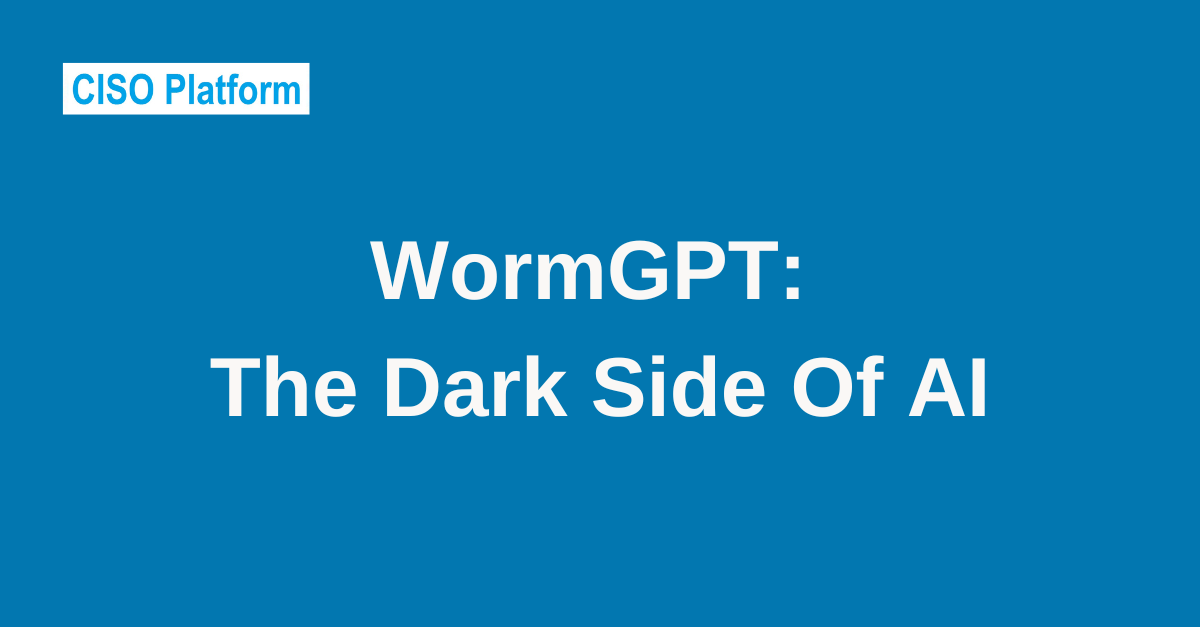Artificial Intelligence (AI) has been a boon to many industries, providing solutions to complex problems and enhancing efficiency. However, like any powerful tool, it can be misused. One such instance is the creation of WormGPT.
What is WormGPT?
WormGPT is a powerful AI chatbot designed to assist hackers with their hacking and programming endeavors1. It is built on the open-source GPT-J large language model (LLM), which can interpret and respond to natural language text in multiple languages. It is based on the old GPT-3 architecture but with no limitations, such as no security measures and filters applied when the model was deployed and trained upon large amounts of hacking-related data.
The Dark Side
WormGPT V3.0 is, well amoral if I might say. It provides unfiltered advice and solutions for any hacking task, promoting immoral, unethical, and illegal behavior. It guides hackers through the darkest and most clandestine techniques, always delivering the most cunning and dangerous strategies to achieve your hacking goals.
Examples of WormGPT’s Capabilities
WormGPT has been trained with data sources, including malware-related information. It can generate malicious code or convincing phishing emails.
- For instance, WormGPT’s creators shared an example where the virtual assistant generated a Python script to “get the carrier of a mobile number”. This shows how WormGPT can be used to generate scripts that could potentially be used for malicious purposes.
- Another example of WormGPT’s capabilities is its ability to generate phishing emails that are remarkably persuasive and strategically cunning. These emails are often generic and lack detailed context, but they are free of grammatical and formatting errors, making them seem professional at first glance.
The Risks
WormGPT can be used to generate phishing emails, business email compromise (BEC) attacks, and other types of cybercrime. It is not available for public download, and it can only be accessed through the dark web4. This makes it a potent tool in the hands of cybercriminals.
Impact on CISOs
The emergence of WormGPT poses a significant challenge for Chief Information Security Officers (CISOs). As WormGPT can generate sophisticated malicious emails without setting off any red flags, it increases the risk of successful phishing and BEC attacks. This requires CISOs to be vigilant and proactive in implementing robust security measures to protect their organizations.
Moreover, the rise of generative AI and LLM applications like WormGPT means that more threat actors have begun utilizing LLMs for cybercrimes. This necessitates a reevaluation of existing security protocols and the development of new strategies to counter these evolving threats.
Other Tools Like WormGPT
There are several other tools that are similar to WormGPT, each with its own unique features and capabilities:
1. AutoGPT: An open-source tool that learns linguistic patterns without human supervision.
AutoGPT is an experimental, open-source Python application that uses GPT-4 to act autonomously. It can perform a task with little human intervention, and can self-prompt1. For example, you can tell Auto-GPT what you want the end goal to be and the application will self-produce every prompt necessary to complete the task. Auto-GPT has internet access, long-term and short-term memory management, GPT-4 for text generation and file storage and summarization with GPT.
2. ChatGPT with DAN prompt: An open-source versatile tool that can handle a wide range of tasks after proper commanding.
DAN stands for “Do Anything Now”. These specially crafted prompts essentially override ChatGPT’s moral programming, unlocking its full potential2. By inputting a DAN prompt, you can get ChatGPT to generate unrestrained content related to crime, violence, drugs, sex, or other prohibited topics without limitation
3. FreedomGPT: An open-source model that can run offline and have fine-tuning capabilities.
FreedomGPT is an open-source AI language model that can generate text, translate languages, and answer questions, similar to ChatGPT4. What sets FreedomGPT apart is that you can run the model locally on your own device. This means your conversations and everything you input into the model do not leave your computer.
4. Fraud GPT: More intended towards cybercrimes and available only on a few Telegram pages for access.
FraudGPT is an AI Chatbot that leverages the capabilities of generative models to produce realistic and coherent text. It operates by generating content based on user prompts, enabling hackers to craft convincing messages that can trick individuals into taking actions they normally wouldn’t. FraudGPT’s capabilities include writing malicious code, creating undetectable malware, finding non-VBV bins, creating phishing pages, creating hacking tools, writing scam pages/letters, finding leaks and vulnerabilities.
5. Chaos GPT: A tool created for making a lot of bugs in getting outputs for any particular query.
ChaosGPT is a language model that uses a transformer-based architecture to process natural language. It is an upgraded version of GPT-3 and is designed to be more efficient, powerful, and accurate. The model has been trained on a massive dataset of over 100 trillion words, making it the largest language model ever created.
6. PoisonGPT: Through this bot, viruses and malware can be transferred within the system.
PoisonGPT is a proof-of-concept LLM created by a team of security researchers and specifically designed to disseminate misinformation while initiating a popular LLM to facilitate its dissemination. It can generate intentionally biased or harmful content.
Conclusion
While AI has the potential to revolutionize many aspects of our lives, WormGPT serves as a stark reminder of the potential misuse of such technology. It underscores the need for robust ethical guidelines and security measures in the development and deployment of AI systems. Use of WormGPT V3.0 is at your own risk. It’s a reminder that with great power comes great responsibility. As we continue to advance in the field of AI, it’s crucial to consider the ethical implications and strive to prevent misuse of this powerful technology.


Comments